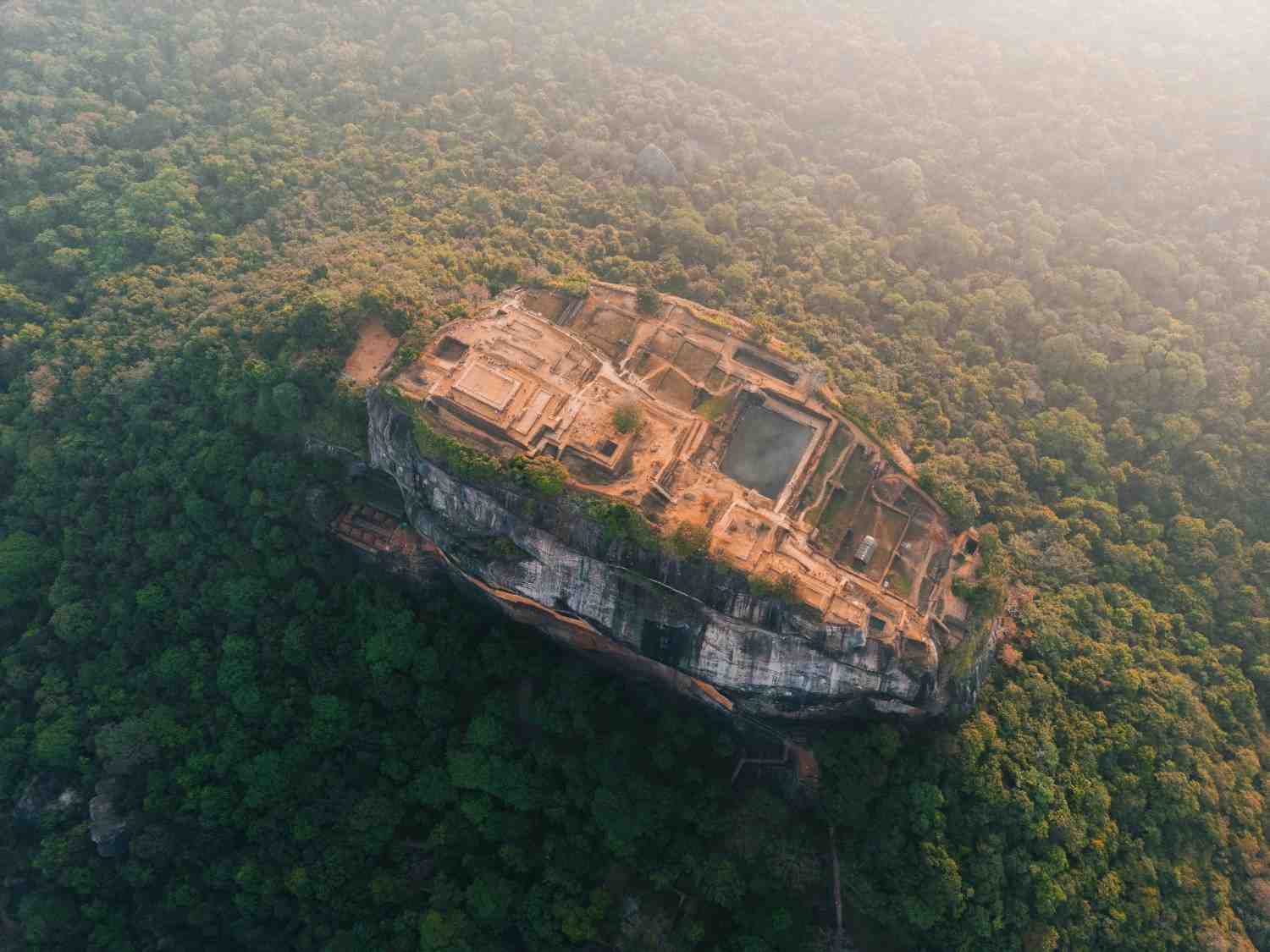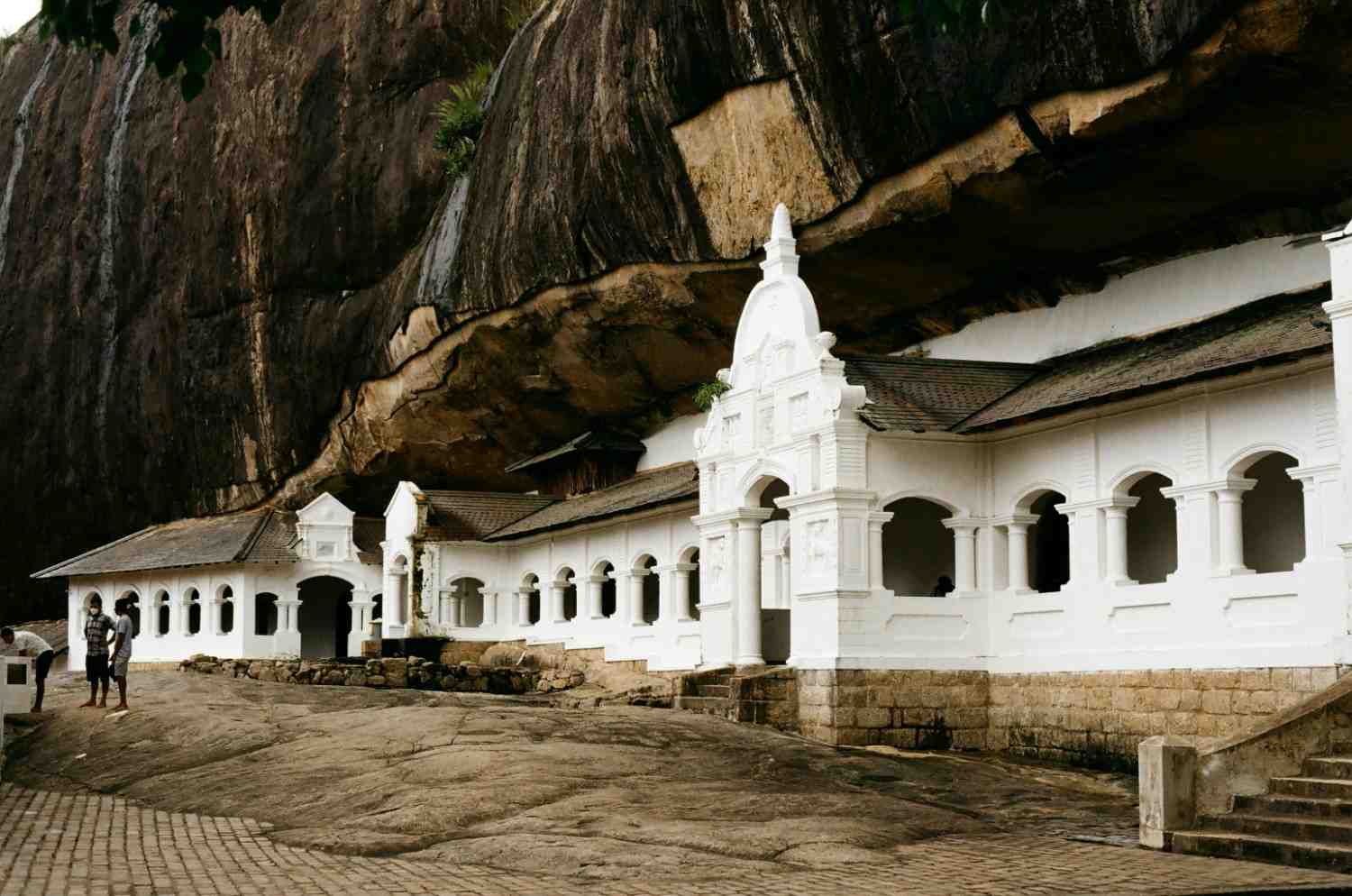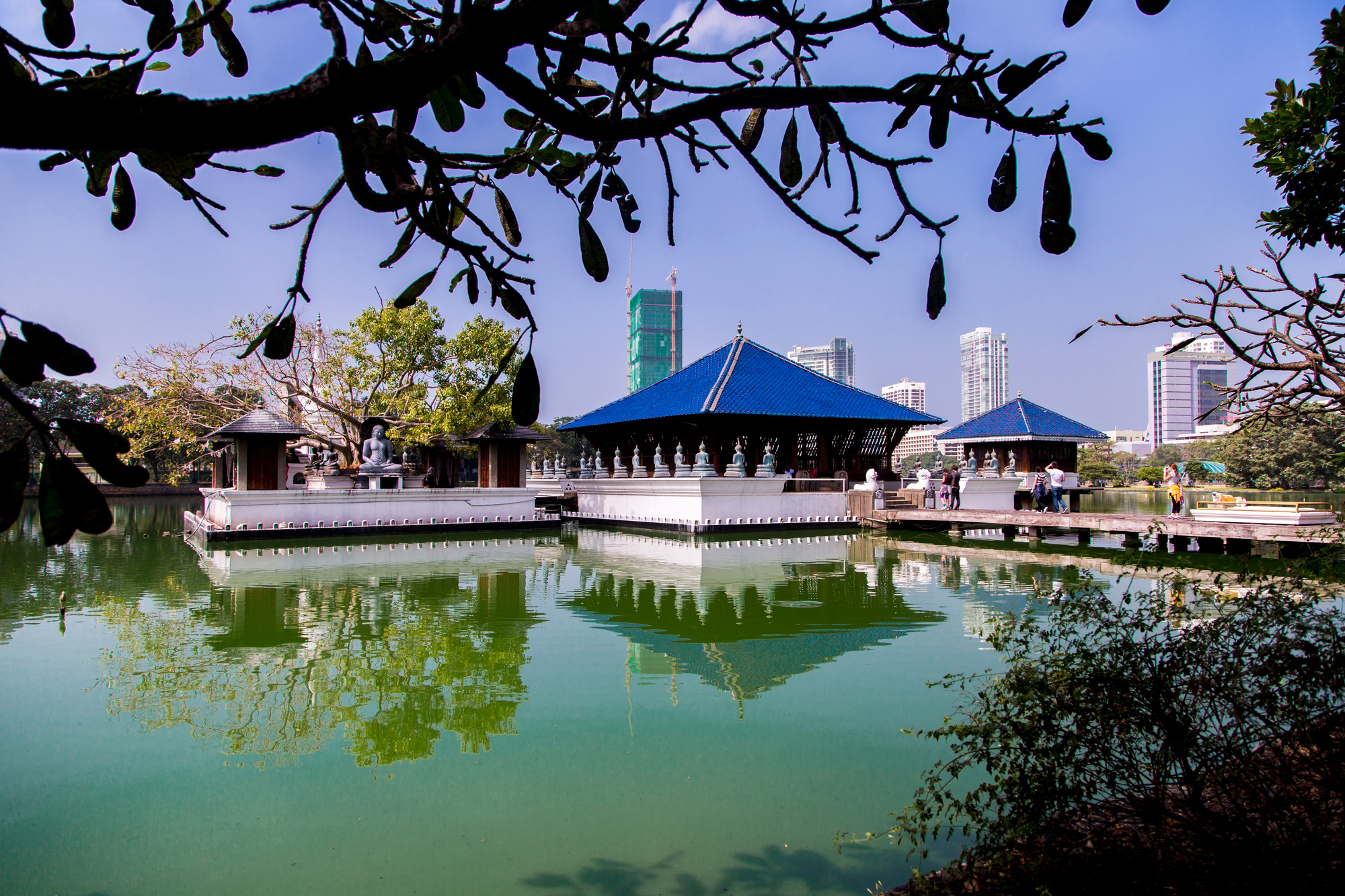Introduction to Sigiriya

Sigiriya, also known as Lion Rock, stands as one of Sri Lanka’s most iconic landmarks and is recognized as a UNESCO World Heritage site. Nestled in the central province of Sri Lanka, this ancient rock fortress is celebrated for its extraordinary architecture and rich history. Dating back to the 5th century AD, it was originally established by King Kasyapa I, who transformed the natural rock into a magnificent citadel and a royal residence. The site is not only significant due to its historical context but also for its stunning aesthetics, making it one of the most visited tourist attractions in the country.
Visitors to Sigiriya are captivated by its soaring heights and panoramic views, where the remains of the king’s palace atop the rock still echo tales of a bygone era. The journey to the fortress is accessible via a well-maintained pathway adorned with elaborate frescoes and water gardens, a testament to the advanced engineering skills of ancient Sri Lankan civilization. The frescoes depict celestial maidens, and their vibrant colors remain remarkably preserved, exemplifying the artistic finesse of the time.
One of the most defining features of Sigiriya is its imposing lion’s paws that lead to the entrance of the fortress. As visitors ascend, they are greeted with not only impressive stone carvings but also an engaging narrative of royal ambition and tyrannical history. Its strategic location and robust defenses made Sigiriya a formidable stronghold, while also serving as a center for religious and artistic expression during its heyday.
In summary, Sigiriya’s allure as a travel destination lies in its historical significance, architectural marvel, and natural beauty. Tourists from around the globe flock to this remarkable site, eager to experience the grandeur of what is commonly referred to as the Eighth Wonder of the World. The experience of exploring Sigiriya is truly unforgettable, offering insights into Sri Lanka’s rich cultural heritage.
Historical and Legendary Background
Sigiriya, often referred to as the Eighth Wonder of the World, stands as a remarkable testament to Sri Lankan history and heritage. Its origin dates back to the 5th century AD during the reign of King Kashyapa I, who ruled the Anuradhapura Kingdom. This king’s ascension to power was marked by a dramatic and notorious series of events. Following a violent coup against his father, King Dhatusena, Kashyapa sought refuge in the rock fortress of Sigiriya, which would later transform into a lavish palace.
Upon ascending to the throne, Kashyapa made the strategic decision to build a grand citadel on the treacherous rock face of Sigiriya. This fortress featured impressive architectural advancements and intricate water gardens, symbolizing both power and ambition. The historical context reveals that Sigiriya was not merely a royal retreat but also a heavily defended stronghold, embodying the king’s desire for self-preservation amidst threats, including a possible invasion by his half-brother, Moggallana, who had fled to India.
As we examine the legendary aspects intertwined with Sigiriya’s history, it becomes crucial to acknowledge the frescoes that adorn its walls, depicting celestial maidens known as ‘Apsaras.’ These artworks reflect a unique blend of artistry and symbolism, inviting interpretations of celestial beauty and royal authority. Additionally, the mirror wall and the Lion’s Gate further emphasize the site’s historical significance, merging functional purpose with artistic expression.
In subsequent years, after Kashyapa’s demise, Sigiriya transformed into a monastic site for Buddhist monks. The shift from fortress to sanctuary underscores the dynamic history of this iconic site, which underwent various transitions in purpose and cultural significance. Today, Sigiriya stands not only as a UNESCO World Heritage Site but also as a reminder of the rich tapestry of Sri Lanka’s storied past, seamlessly intertwining legend and historical narrative.
Highlights of the Site
Sigiriya, often referred to as the Eighth Wonder of the World, boasts a collection of architectural marvels, each with its own unique charm and historical significance. Among the most iconic of these is the majestic lion’s paw entrance, an impressive structure that provides access to the summit of the rock fortress. This entrance was designed to resemble a massive lion, symbolizing strength and power, and is a testament to the ingenuity of its creators. As visitors ascend the steps, they are greeted by the sheer scale of the lion’s paws, carved meticulously from the rock face, creating an awe-inspiring first impression.
Another breathtaking feature of Sigiriya is the stunning frescoes known as the ‘cloud maidens.’ These vibrant paintings, which adorn the rock walls, depict ethereal figures that are thought to represent celestial nymphs. The exquisite artistry and vivid colors have survived for centuries, providing a glimpse into the artistic talent of the 5th century. As visitors gaze upon these works, they are transported to a bygone era where art and spirituality intertwined, capturing the imagination of all who behold them.
The Mirror Wall, another highlight of Sigiriya, serves not only as a physical barrier but as a canvas for poetic expressions. Originally polished to the point where it reflected images, this wall now features ancient inscriptions and poems left by visitors throughout the ages. As one walks alongside this historic feature, the echoes of past voices can almost be heard, reminding visitors of the deep cultural legacy that surrounds them.
At the summit, the royal palace ruins present a captivating blend of history and natural beauty. Once a grand palace, this area now invites exploration amidst the remnants of its former glory. The breathtaking panoramic views from the top reveal Sigiriya’s lush landscape and give insight into its strategic importance as a fortress. Overall, the highlights of Sigiriya form a tapestry of architectural brilliance and cultural richness that captivates travelers, making it a must-visit location in Sri Lanka.
Practical Travel Information
Reaching Sigiriya, often referred to as the Eighth Wonder of the World, is an essential part of the travel experience. The site is conveniently located in the central part of Sri Lanka, and there are several ways to get there from major cities. From Colombo, the distance to Sigiriya is approximately 170 kilometers, which may take around 4-5 hours by car. Visitors can opt for buses departing from the Colombo Central Bus Station, making the journey affordable and accessible. Kandy, about 90 kilometers away, provides another route to Sigiriya, with travel times of around 3 hours. For those coming from Dambulla, the journey is shorter—less than 30 kilometers and often takes under an hour.
When planning your trip, it is critical to note the opening hours of Sigiriya. The site typically opens at 7:00 AM and closes at 5:30 PM. Ticket prices can vary depending on nationality; for instance, local visitors might pay less than international tourists. As of recent data, the entrance fee for foreign tourists is around 30 USD, which includes a guided tour option for an additional cost. For those wishing to explore the area more fully, a special multi-site pass might be available, covering other nearby attractions.
Regarding attire, it is advised to wear comfortable clothing and sturdy shoes, as the ascent involves climbing steps set in a rocky surface. While there are some shaded areas, the heat can be intense during midday; hence, lightweight and breathable fabrics are ideal. Safety is a priority as well; visitors should stay on marked paths and be cautious of wildlife nearby. The best times to visit Sigiriya are early morning or late afternoon when temperatures are cooler, and the site is less crowded, allowing for a more enjoyable experience.
Nearby Attractions

While visiting Sigiriya, known as the Eighth Wonder of the World, tourists have the opportunity to explore several nearby attractions that further enrich their experience. One prominent site is Pidurangala Rock, located just a few kilometers from the iconic Sigiriya fortress. Climbing this rock provides exhilarating panoramic views of the surrounding landscape, including a spectacular vantage point of Sigiriya itself. The trek is relatively short, taking approximately 30 to 45 minutes to reach the summit, making it a popular choice for both sunrise and sunset visits.
Another must-visit location is the Dambulla Cave Temple, situated about 20 kilometers from Sigiriya. This UNESCO World Heritage Site boasts a series of five stunning caves adorned with beautiful murals and over 150 Buddha statues. The intricate artistry and historical significance of the temple contribute to its allure. The journey from Sigiriya to Dambulla typically requires around 30 minutes by car, making it a convenient excursion for travelers keen on exploring Sri Lanka’s rich cultural heritage.
For those interested in wildlife, Minneriya National Park is an essential stop, especially for elephant enthusiasts. Located approximately 30 kilometers from Sigiriya, the park is renowned for its large gatherings of Asian elephants, particularly during the dry season from July to October. A safari through Minneriya offers a unique chance to observe these majestic creatures in their natural habitat, alongside other wildlife such as sambar deer and numerous bird species. The drive to Minneriya lasts about 40 minutes and is well worth the journey for nature lovers.
Visitor Tips for Sigiriya
Visiting Sigiriya, one of the most remarkable sites in Sri Lanka, requires careful planning to fully appreciate its grandeur. To enhance your experience, consider the following tips that cater to different aspects of your visit, ensuring it is both enjoyable and rewarding.
First and foremost, the climb to the top of Sigiriya Rock is a must-do for every visitor. To prepare for this journey, wear comfortable hiking shoes and carry sufficient water for hydration. Starting the climb early in the morning not only helps you avoid the mid-day heat, but also allows you to experience the site before the crowds arrive. Early risers can enjoy the breathtaking views as the sun rises, casting a golden hue over the landscape.
When it comes to photography, timing is essential. The golden hour—shortly after sunrise or before sunset—offers the most flattering natural light for capturing the stunning vistas and the intricate frescoes on the rock. Ensure your camera or smartphone is ready and consider a lightweight tripod to stabilize your shots. This will help capture the beauty of the ruins and the surrounding gardens without any distortion.
To further enhance your visit, consider hiring a knowledgeable local guide who can provide insights into the historical and cultural significance of Sigiriya. This additional context can greatly enrich your understanding of the site. Additionally, be mindful of your timings; visiting on weekdays can often mean fewer visitors, which not only allows you to explore in peace but also provides unimpeded access to prime photo opportunities.
As you explore the site, adhere to designated paths and regulations to preserve the integrity of the surroundings. By following these tips, you will be better equipped to enjoy an unforgettable experience at Sigiriya, making the most of your adventure at this UNESCO World Heritage site.
Cultural Significance of Sigiriya
Sigiriya, often referred to as the Eighth Wonder of the World, is not just an architectural marvel but also a profound reflection of the cultural and historical fabric of Sri Lanka. Located in the Matale District, this ancient citadel was built during the reign of King Kasyapa in the 5th century CE and serves as a testimony to ancient engineering and artistry. The grandeur of Sigiriya is evident in its sophisticated layout, intricate frescoes, and remarkable water gardens, which highlight the ingenuity of the era’s craftsmanship.
At its core, Sigiriya embodies the Buddhist and Hindu influences that permeated Sri Lanka during its construction. The site is adorned with vibrant frescoes depicting celestial maidens, which symbolize beauty and grace, demonstrating the artistic prowess of the period. These murals are not merely decorative; they hold deeper meanings about the values and lifestyles of the time, reflecting the spiritual and societal ideals prevalent during King Kasyapa’s reign. Moreover, the lion’s paws at the entrance of the fortress represent strength and protection, aligning with the king’s aspirations to establish dominance and security within his realm.
Furthermore, Sigiriya is surrounded by a harmonious blend of nature and architecture, emphasizing the ancient Sri Lankan belief in the interconnectedness of life and the environment. The site’s water management system, featuring hydraulic engineering that includes reservoirs and canals, showcases the advanced technological skills possessed by the builders. This ingenuity not only catered to the practical needs of the residents but also represented a philosophical outlook on sustainability and natural resource management.
In essence, Sigiriya stands as a vital cultural monument that preserves the artistic, architectural, and spiritual values of ancient Sri Lankan civilization. Its remarkable features and historical significance continue to attract scholars, historians, and tourists alike, reinforcing its status as a symbol of Sri Lanka’s rich heritage.
Environmental Considerations
Sigiriya, often referred to as the Eighth Wonder of the World, is not only renowned for its historical and architectural significance but also for its breathtaking natural beauty. The site is enveloped by lush greenery and vibrant ecosystems that are vital for its preservation. Due to the increasing number of visitors, there are concerted conservation efforts in place to protect Sigiriya’s environment. These initiatives are crucial for maintaining the delicate balance between tourism and the surrounding natural habitat.
One of the primary environmental concerns is the impact of tourism on the local ecosystem. Increased foot traffic can lead to soil erosion and depletion of local flora. To mitigate this, local authorities have implemented various measures such as designated pathways and educational signage to guide visitors towards responsible behavior. These practices not only enhance the touring experience but also help protect the site’s biodiversity. Furthermore, it is essential to acknowledge the various species of fauna and flora endemic to the region, which play a significant role in the ecological balance around Sigiriya.
Moreover, responsible tourism practices are encouraged among visitors to minimize their ecological footprint. Travelers should consider reducing single-use plastics and opting for eco-friendly alternatives while enjoying the site. Engaging with local communities and supporting conservation projects are also excellent ways to contribute positively. By being mindful of their environmental impact, visitors can enjoy the wonders of Sigiriya while ensuring that its natural beauty is preserved for future generations.
As the significance of conservation becomes increasingly recognized, ongoing dialogues about environmental protocols surrounding Sigiriya stimulate further actions. The sustainable approach to tourism not only safeguards the environment but also enriches the visitor experience, creating a harmonious relationship between culture and nature.
Conclusion: A Step Back into History
In the tapestry of Sri Lanka’s rich cultural heritage, Sigiriya stands out as a monumental emblem of the island’s illustrious past. Often referred to as the Eighth Wonder of the World, this ancient rock fortress is not merely a site of pilgrimage for intrepid travelers but serves as a unique portal into the history and artistry of a bygone era. The journey to the summit is not just a physical ascent; it embodies a metaphorical voyage that invites visitors to immerse themselves in the legends and lore surrounding this UNESCO World Heritage Site.
While the uphill trek challenges both body and spirit, it rewards the intrepid traveler with breathtaking vistas that stretch far beyond the lush valleys of Dambulla. Each footstep resonates with the weight of history, leading one through the remnants of regal gardens and intricate frescoes that capture the imagination. The artistry displayed on the sheer cliff walls and the architectural ingenuity of the water gardens illustrate the advanced civilization that once thrived in this locale. Thus, exploring Sigiriya is an invitation to delve into the complexities of Sri Lanka’s past, understanding the culture and traditions that have shaped its identity over centuries.
It is essential for any traveler seeking to appreciate the depth of Sri Lanka’s historical narrative to make Sigiriya a highlight of their itinerary. The experiences garnered here, from the climb itself to the narratives shared by knowledgeable guides, are both profound and unforgettable. As travelers find themselves standing where ancient kings once gazed over their kingdoms, it solidly affirms that a visit to Sigiriya is not just a touristic endeavor, but a resonance of cultural appreciation and historical understanding. Embrace this journey and allow it to enrich your understanding of not only Sri Lanka but the greater narrative of human achievement.




